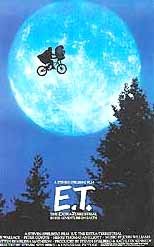Looking at the design side of movies
Looking at the design side of movies
Posted March. 21, 2001 19:06,

This book shows how film technique can add meaning to movies. It helps readers understand why certain techniques were used, how they function and what messages they deliver.
After a while, the Temple of Luxor that forms the background in some of the scenes in ``The Spy Who Loved Me,’’ a James Bond film, comes to symbolize mankind’s blind yearning for Egyptian civilization. The chiaroscuro lighting that is used in the framing of Kim Basinger in ``Nine-and-a-Half Weeks’’ is meant to highlight her sexual attractiveness. The yellow pillar and yellow uniform of the train crewman in ``Topio stin omichli (Landscape in the Mist)’’ express the main character`s desire to find his father. The picture of Roy Lichtenstein on a passing truck in ``Other People’s Money’’ satirizes American popular culture, while the dominance of the three primary colors in the first and the last scenes of ``High Heels’’ points to the conflict between the mother and daughter.
This book is unlike other movie-related books that contain criticism or specialized vocabulary but it still manages to offer great insight into the movies.
It features a new method of approach called ``movie and design,’’ with commentaries on the use of film technique and a wealth of movie pictures.
This book offers beginners some insight into film as visual art, but it may be less profound for those already familiar with the techniques. Overall, it is a great way to find out what an important role technique plays in the production of films, how technique form its own language and how it enriches the filmgoing experience.
Written by Park Jin-Bae/192 Pages/15,000 won/Design House
Lee Chung-Gol (Monthly `Go Korea’ editor)



![‘건강 지킴이’ 당근, 효능 높이는 섭취법[정세연의 음식처방]](https://dimg.donga.com/c/138/175/90/1/wps/NEWS/IMAGE/2026/01/18/133181291.1.jpg)



